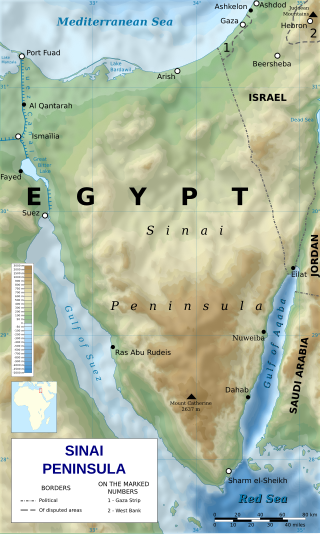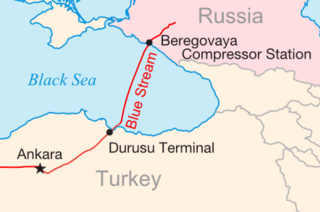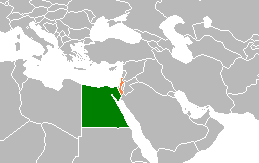
The economy of Egypt used to be a highly centralized economy, focused on import substitution under president Gamal Abdel Nasser (1954–1970). During the rule of president Abdel Fattah el-Sisi (2014–present), the economy follows Egypt's 2030 Vision. The policy is aimed at diversifying Egypt's economy. The country's economy is the second largest in Africa after Nigeria regarding nominal GDP, and 33rd in worldwide ranking as of 2022.

The economy of Jordan is classified as an emerging market economy. Jordan's GDP per capita rose by 351% in the 1970s, declined 30% in the 1980s, and rose 36% in the 1990s. After King Abdullah II's accession to the throne in 1999, liberal economic policies were introduced. Jordan's economy had been growing at an annual rate of 8% between 1999 and 2008. However, growth has slowed to 2% after the Arab Spring in 2011. The substantial increase of the population, coupled with slowed economic growth and rising public debt led to a worsening of poverty and unemployment in the country. As of 2019, Jordan has a GDP of US$44.4 billion, ranking it 89th worldwide.

The Sinai Peninsula, or simply Sinai, is a peninsula in Egypt, and the only part of the country located in Asia. It is between the Mediterranean Sea to the north and the Red Sea to the south, and is a land bridge between Asia and Africa. Sinai has a land area of about 60,000 km2 (23,000 sq mi) and a population of approximately 600,000 people. Administratively, the vast majority of the area of the Sinai Peninsula is divided into two governorates: the South Sinai Governorate and the North Sinai Governorate. Three other governorates span the Suez Canal, crossing into African Egypt: Suez Governorate on the southern end of the Suez Canal, Ismailia Governorate in the center, and Port Said Governorate in the north.

The Six-Day War or June War, also known as the 1967 Arab–Israeli War or Third Arab–Israeli War, was fought between Israel and a coalition of Arab states from 5 to 10 June 1967.
The history of the Israel Defense Forces (IDF) intertwines in its early stages with history of the Haganah.

Blue Stream is a major trans-Black Sea gas pipeline that carries natural gas to Turkey from Russia. The pipeline has been constructed by the Blue Stream Pipeline B.V., the Netherlands based joint venture of Russian Gazprom and Italian Eni. The Blue Stream Pipeline B.V. is an owner of the subsea section of pipeline, including Beregovaya compressor station, while Gazprom owns and operates the Russian land section of the pipeline and the Turkish land section is owned and operated by the Turkish energy company BOTAŞ. According to Gazprom the pipeline was built with the intent of diversifying Russian gas delivery routes to Turkey and avoiding third countries.
The Dolphin Gas Project is the natural gas project of Qatar, the United Arab Emirates, and Oman. It is the Gulf Cooperation Council's first cross-border refined gas transmission project and the largest energy-related venture ever undertaken in the region.

Relations between neighbours Iraq and Jordan have historically been close. The two states were created after World War I from former Ottoman dominions by way of a secret bilateral agreement between the United Kingdom of Great Britain and Ireland and the French Third Republic. Several efforts to unify the countries have been pursued over the last century. Jordan has an embassy in Baghdad and Iraq has an embassy in Amman.

Egypt–Israel relations are foreign relations between Egypt and Israel. The state of war between both countries which dated back to the 1948 Arab–Israeli War culminated in the Yom Kippur War in 1973, and was followed by the 1979 Egypt–Israel peace treaty a year after the Camp David Accords, mediated by U.S. president Jimmy Carter. Full diplomatic relations were established on January 26, 1980, and the formal exchange of ambassadors took place one month later, on February 26, 1980, with Eliyahu Ben-Elissar serving as the first Israeli Ambassador to Egypt, and Saad Mortada as the first Egyptian Ambassador to Israel. Egypt has an embassy in Tel Aviv and a consulate in Eilat. Israel has an embassy in Cairo and a consulate in Alexandria. Their shared border has two official crossings, one at Taba and one at Nitzana. The crossing at Nitzana is for commercial and tourist traffic only. The two countries' borders also meet at the shoreline of the Gulf of Aqaba in the Red Sea.
The Tamar gas field is a natural gas field in the Mediterranean Sea off the coast of Israel. The field is located in Israel's exclusive economic zone, roughly 80 kilometres (50 mi) west of Haifa in waters 1,700 metres (5,600 ft) deep. The Tamar field is considered to have proven reserves of 200 billion cubic metres of natural gas, while the adjoining Tamar South field has 23 billion cubic metres. Together, they may have an additional 84 BCM of "probable" reserves and up to 49 BCM of "possible" reserves. At the time of discovery, Tamar was the largest find of gas or oil in the Levant basin of the Eastern Mediterranean Sea and the largest discovery by Noble Energy. Since Tamar's discovery, large gas discoveries have been made in other analogous geological formations dating back to the Oligocene–Miocene epoch in the Levant basin. Because Tamar was the first such discovery, these gas containing presalt formations have become collectively known as Tamar sands.

This article describes the energy and electricity production, consumption and import in Egypt.
East Mediterranean Gas Company (EMG) is an owner and operator of thePeace Pipileine Al Arish–Ashkelon pipeline. EMG is a joint company of Mediterranean Gas Pipeline Ltd MGPC which belongs to "Evsen Group of Companies" (17%), EMED BV (39%), East Gas Company EGC (9%), and the Egyptian General Petroleum Corporation (10%).
Ampal-American Israel Corporation was a New York unit of Israel's Bank Hapoalim. It was a holding company that primarily acquired interests in Israel-related businesses.

Energy in Jordan describes energy and electricity production, consumption and import in Jordan. Jordan is among the highest in the world in dependency on foreign energy sources, with 96% of the country's energy needs coming from imported oil and natural gas from neighboring Middle Eastern countries. This complete reliance on foreign oil imports consumes a significant amount of Jordan's GDP. This led the country to plan investments of $15 billion in renewable and nuclear energy. To further address these problems, the National Energy Strategy for 2007-2020 was created which projects to boost reliance on domestic energy sources from 4 per cent to 40 per cent by the end of the decade.

Energy in Lebanon is dominated by oil, which represents more than 95% of the primary energy consumed in 2017. The great majority of energy used in the country is imported. The energy market in Lebanon is characterized by sharply rising consumption, and frequent shortages due to dilapidated infrastructure partly destroyed by the civil war that ravaged the country between 1975 and 1990.

Most energy in Israel comes from fossil fuels. The country's total primary energy demand is significantly higher than its total primary energy production, relying heavily on imports to meet its energy needs. Total primary energy consumption was 304 TWh (1.037 quad) in 2016, or 26.2 million tonne of oil equivalent.

The natural gas transmission system of Ukraine is a complex of natural gas transmission pipelines for gas import and transit in Ukraine. It is one of the largest gas transmission systems in the world. The system is linked with natural gas transmission systems of Russia and Belarus on one hand, and with systems of Poland, Romania, Moldova, Hungary and Slovakia on the other hand. The system is owned by Government of Ukraine and operated by Ukrtransgaz. Some local transmission lines together with distribution sets are owned by regional gas companies.
The petroleum industry in Syria forms a major part of the economy of Syria. According to the International Monetary Fund, before the Syrian Civil War, oil sales for 2010 were projected to generate $3.2 billion for the Syrian government and accounted for 25.1% of the state's revenue.

Natural gas in Israel is a primary energy source in Israel, mainly utilized for electricity production and to lesser degree in industry. Israel began producing natural gas from its own offshore gas fields in 2004. Between 2005 and 2012, Israel had imported gas from Egypt via the al-Arish-Ashkelon pipeline, which was terminated due to Egyptian Crisis of 2011-14. As of 2017, Israel produced over 9 billion cubic meters (bcm) of natural gas a year. Israel had 199 billion cubic meters of proven reserves of natural gas as of the start of 2016. In early 2017, Israel began exporting natural gas to the Kingdom of Jordan.

Delek Drilling LP is an Israeli energy Oil & Gas partnership in the exploration, development, and production of Natural Gas and Oil. Delek group owned by Yitzhak Tshuva, is the controlling shareholder of the partnership. The partnership is traded on the Tel Aviv Stock Exchange and is part of the TA 35 Index.














